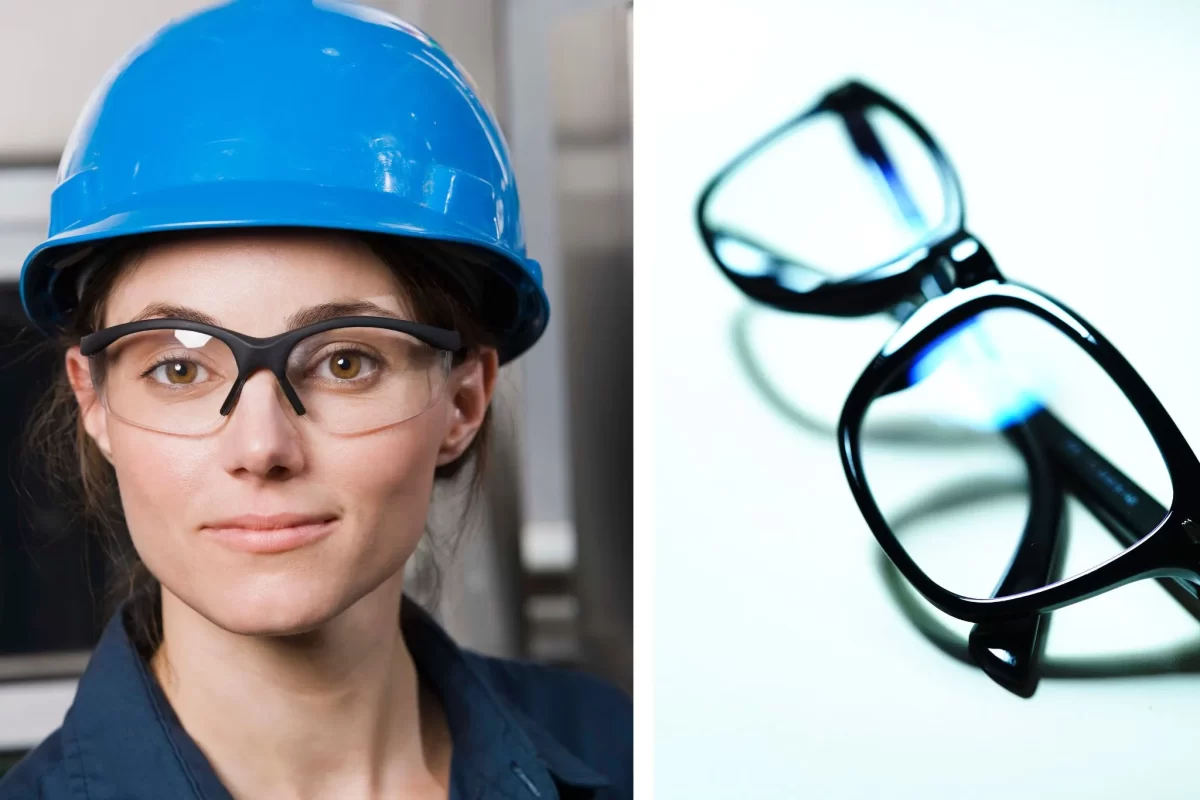Uncategorized
What’s the Difference between Prescription Safety Glasses and Regular Glasses?
When it comes to eyewear, one size definitely doesn’t fit all. Especially in environments where safety is paramount, such as workplaces with potential hazards, the choice between prescription safety glasses and regular glasses becomes crucial. SafeVision.com is here to help you understand the key differences between these two types of eyewear, enabling you to make an informed choice that prioritizes both your vision and your safety.
- Primary Purpose:
- Prescription Safety Glasses: These specialized glasses are designed with safety as the top priority. They provide essential protection against impact, flying debris, chemicals, and other workplace hazards. Prescription safety glasses are engineered to meet rigorous safety standards, making them a must-have in environments where eye safety is a concern.
- Regular Glasses: Regular glasses, also known as prescription eyeglasses or fashion eyewear, are primarily designed to correct vision impairments such as nearsightedness, farsightedness, and astigmatism. While they enhance visual acuity, they lack the protective features needed to safeguard the eyes in potentially hazardous environments.
- Impact Resistance:
- Prescription Safety Glasses: These glasses are crafted with impact-resistant materials like polycarbonate or Trivex, which are designed to withstand high-velocity impacts and protect the eyes from flying debris. Some safety glasses even adhere to ANSI Z87.1 standards, ensuring maximum impact protection.
- Regular Glasses: Regular glasses prioritize vision correction and style, but they may not provide the level of impact resistance needed in environments where objects can pose a risk to the eyes.
- Lens Coatings and Treatments:
- Prescription Safety Glasses: Beyond impact resistance, prescription safety glasses often come with specialized lens coatings. For example, anti-fog coatings prevent lens fogging, while scratch-resistant coatings prolong the life of the glasses despite rugged use.
- Regular Glasses: While regular glasses may also feature coatings for anti-glare or scratch resistance, they might not possess the comprehensive protective coatings found in safety eyewear.
- Durability:
- Prescription Safety Glasses: Safety glasses are designed with durability in mind, using sturdy frames and materials to withstand the rigors of industrial environments.
- Regular Glasses: Fashion and style often play a more significant role in the design of regular glasses, which may lead to frames that are more delicate and less suitable for demanding settings.
- Regulatory Compliance:
- Prescription Safety Glasses: These glasses must adhere to specific safety standards, such as ANSI Z87.1, ensuring they meet stringent requirements for impact resistance and other safety features.
- Regular Glasses: While regular glasses meet vision correction needs, they may not be held to the same safety standards as prescription safety glasses.
In conclusion, the difference between prescription safety glasses and regular glasses boils down to their primary purpose and protective features. If your work or hobbies expose you to potential hazards, prescription safety glasses are the ideal choice to safeguard your eyes. On the other hand, if your main concern is vision correction without safety concerns, regular glasses can suit your needs.
When it comes to prioritizing your vision and safety, SafeVision.com offers a range of prescription safety glasses that combine both elements seamlessly. Make an informed choice that aligns with your lifestyle and environment, and ensure your eyes are protected and your vision is clear.

